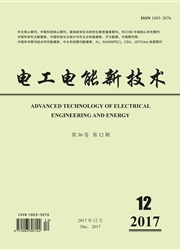

 中文摘要:
中文摘要:
大型电力变压器中的磁屏蔽和电磁屏蔽可控制绕组产生的漏磁通的分布,避免金属构件中的杂散损耗(包括涡流损耗和磁滞损耗)过度集中导致局部过热,引起绝缘部件受损,进而有效地节能降耗,提高运行的可靠性。本文对电力变压器产品中采用的平板式和立式两种不同叠积方式构建的磁屏蔽进行三维建模仿真计算,重点考察研究并比较了平板式和立式磁屏蔽的磁密分布和损耗;进一步改进了测量磁屏蔽损耗的实验平台,为构件杂散损耗测量提供了更合理的漏磁通补偿条件;验证了建模和仿真计算的有效性。本文结果对优化变压器磁屏蔽设计具有重要的参考价值。
 英文摘要:
英文摘要:
In large power transformers,magnetic shields can be used to control the distribution of the leakage flux produced by the windings to avoid the hazardous local overheating causing the unpredictable damage of insulating parts due to excessive concentration of stray losses( including eddy current and hysteresis losses) generated in structural parts,and then effectively save energy and reduce the total power losses,reasonably improve the reliability of the operation. In this paper,the distributions of magnetic fluxes and losses caused in two kinds of shields are examined and compared in detail based on three-dimensional modeling and simulation of MEM- and M-type shields which are built by different stacked ways applied in large power transformers,and the experimental setup that measures the losses of the magnetic shields is further improved to provide a more reasonable condition of the leakage flux complementing for the application of stray-field loss measurement and to validate the effectiveness of all the modeling,simulation,which has significant analysis and reference value for optimizing the design of magnetic shields in large power transformers.
 同期刊论文项目
同期刊论文项目
 同项目期刊论文
同项目期刊论文
 Modeling of Magnetic Properties of GO Electrical Steel Based on Epstein Combination and Loss Data We
Modeling of Magnetic Properties of GO Electrical Steel Based on Epstein Combination and Loss Data We 期刊信息
期刊信息
